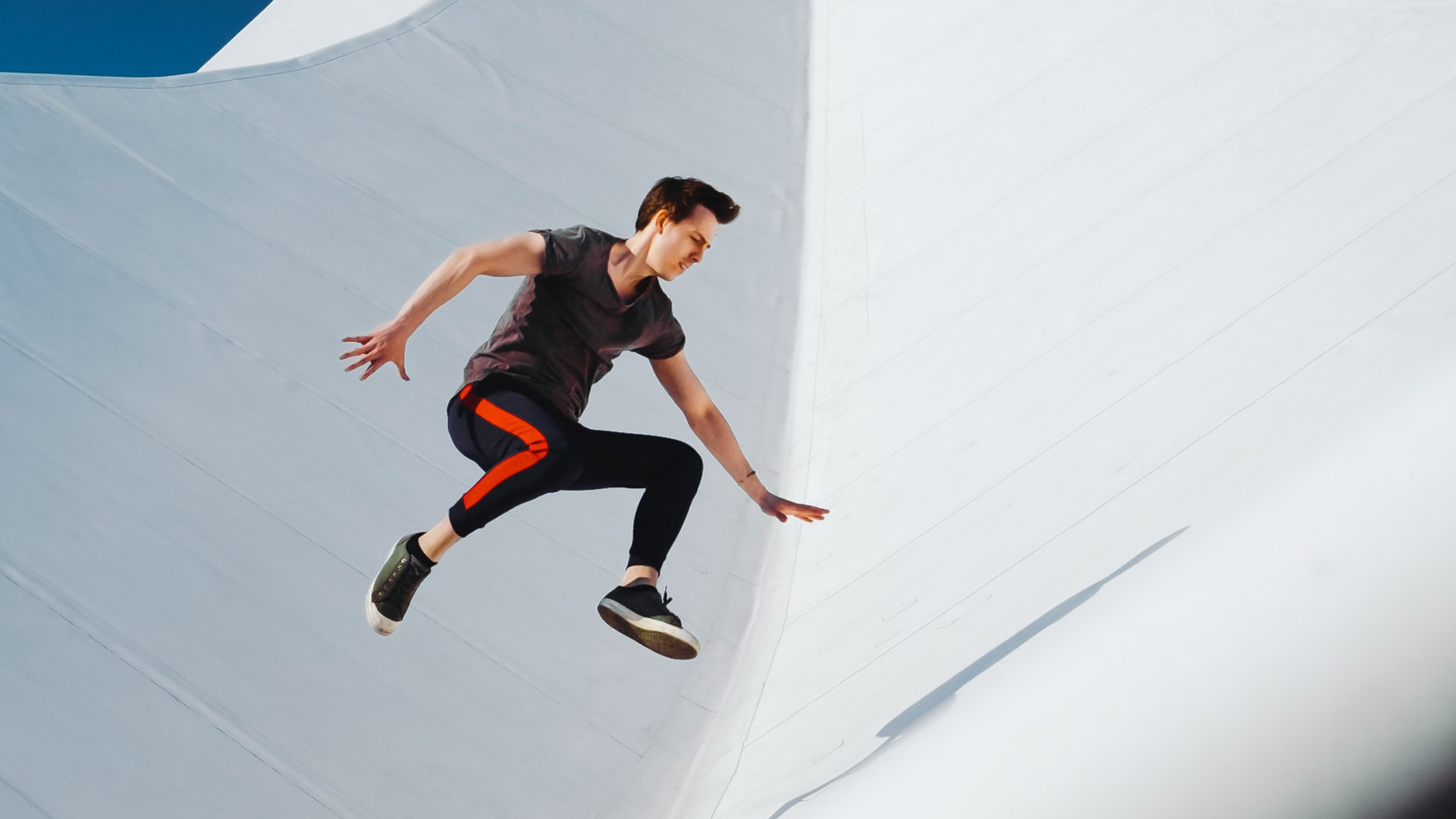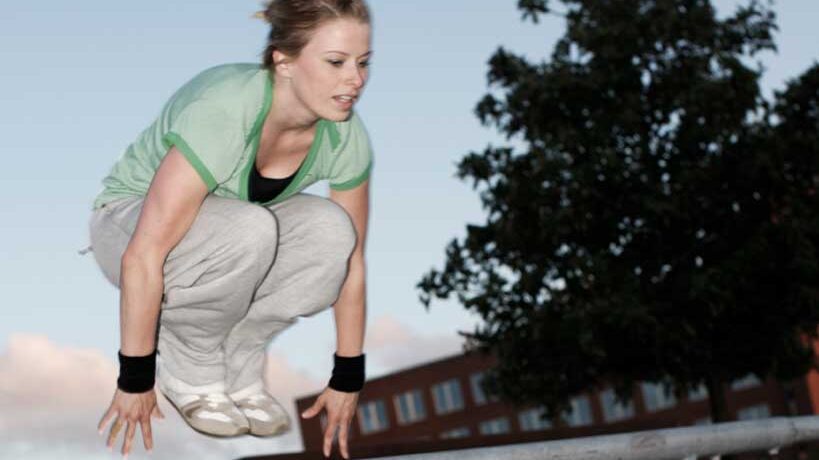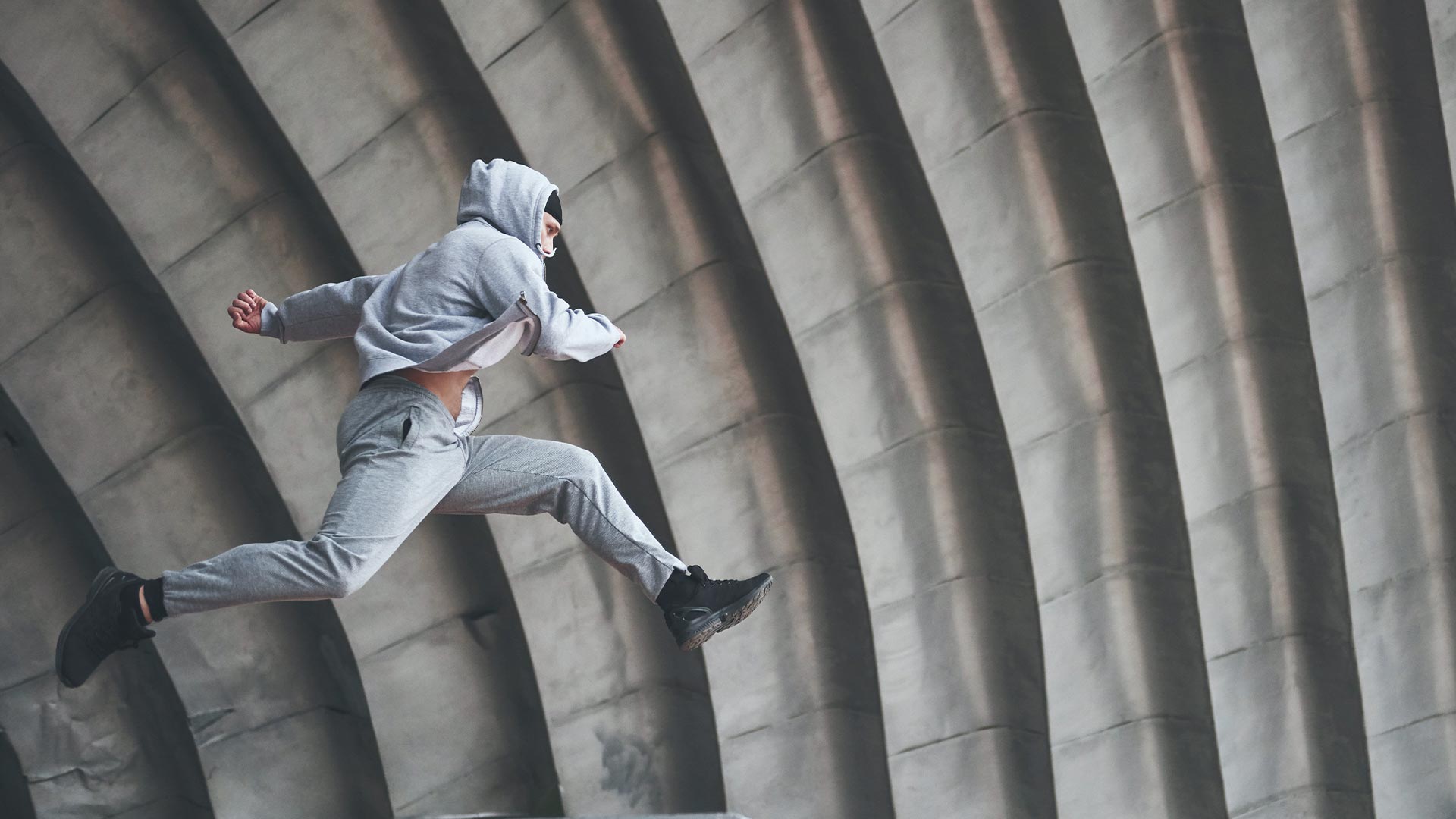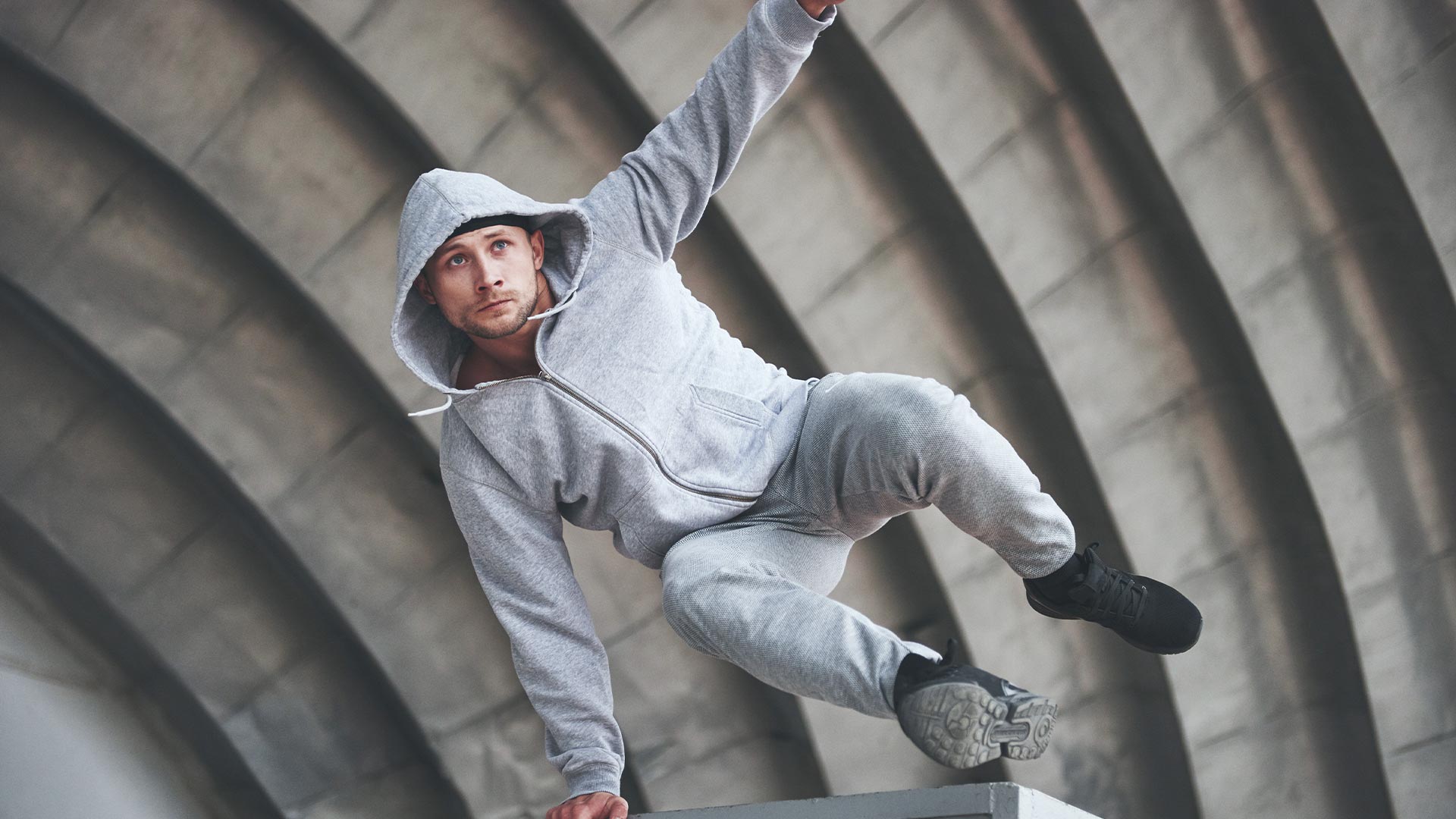ABOUT PARKOUR
Parkour is not a sport, it's a movement art
Parkour is a form of movement that encourages its practitioners to adapt to their surroundings and navigate from point A to B in the most efficient way, without the use of equipment.
If we delve a little deeper into Parkour, we find a lot of interesting things.
Read more here:
Parkour - History and origins
The art of movement is called parkour. Parkour can be understood as a new unique activity that not only excites but has a strong positive impact on children and young people.
Parkour is a form of movement, originally known as l'art du déplacement, developed in the 1980s in France by a group of nine young men under the name "Yamakasi". "Yamakasi", a word in the Lingala language, means "strong in body and spirit", reflecting the core purpose of the sport - to nourish the individual physically, mentally and ethically.
Yamakasi's founders are David Belle, Sebastien Foucan, Yann Hnautra, Chau Belle, Laurent Piemontesi, Guylain N'guba Boyeke, Charles Perriere, Malik Diouf and Williams Belle.
David Belle first introduced the term "parkour" in 1998. The word "parkour" is derived from the French word "parcours", which means route or path in French.
Parkour is a powerful, dynamic and exciting physical discipline that encourages participants to interact with their environment in innovative and effective ways. It is an art form that combines aspects of self-discipline, creativity and physical challenge.
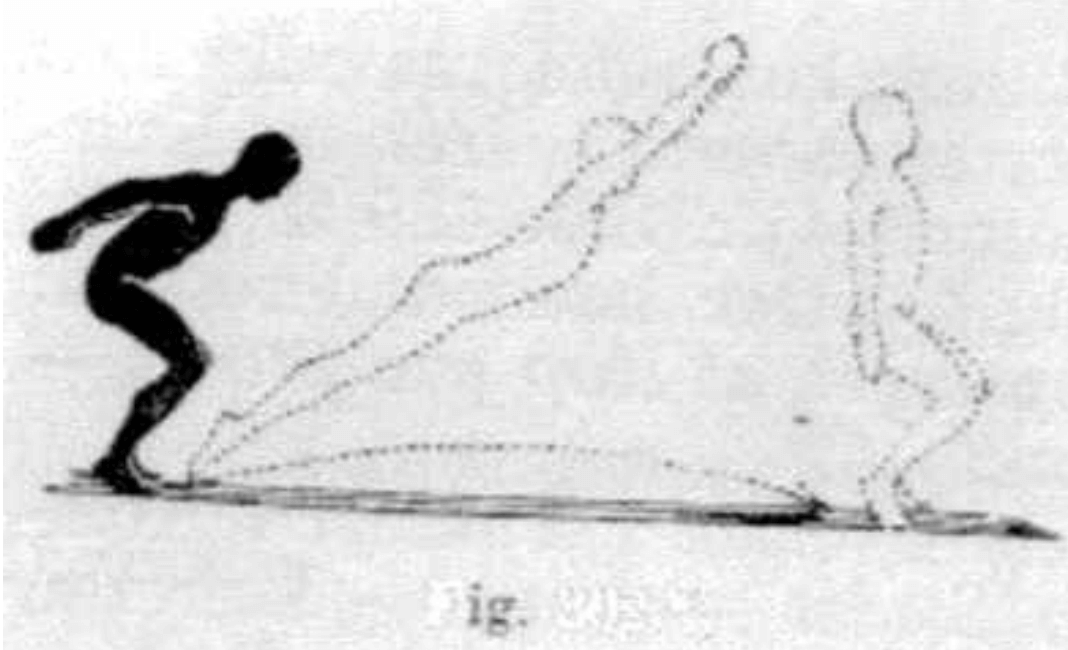
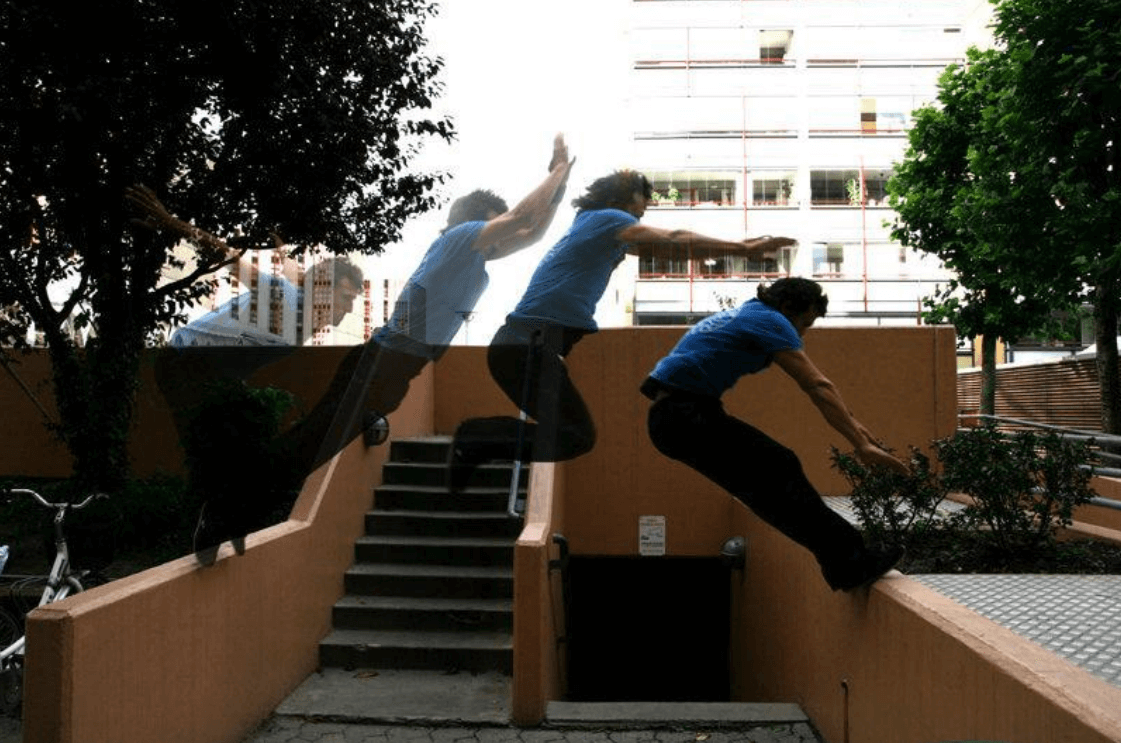
What is Parkour?
The following is an insight into parkour, written by researcher in Sports and Movement, Signe Højbjerre Larsen.
Most people have seen it on TV, on the internet or perhaps out and about in the city. They move through the city at breakneck speed, overcoming benches, stairs, railings and walls in highly creative and fascinating ways.
These images above show two seemingly similar activities, with the only immediate difference being that they are 100 years apart.
In today's gymnastics, many of the traditional exercises illustrated in Fig. 1 have faded out, but on a street corner they suddenly reappear. A couple of young guys jump from wall to wall, do somersaults, land on their feet and run on, take off from new places, balance on handrails and continue down streets and around the next corner.
Across the world, practitioners are filling urban spaces with wild and expressive movements.
Parkour started as a subculture that developed in the French suburbs, but has since spread around the world via the internet. More and more people are practicing parkour, which is reflected in the fact that there are over 111,000 parkour videos on the media sharing site www.youtube.com.
Interest in parkour is growing, but despite this, there is still only sporadic knowledge about it. The existing research has primarily dealt with the activity from a sports pedagogical angle
Parkour is thus a present and current topic in our culture, but at the same time an untouched and unique phenomenon that greatly deserves to be further elucidated.
Parkour as an activity shifts our understanding of what movement activities actually are and points to new trends in body culture.
Parkour reminds us that body cultural trends emerge and develop as self-organized movement activities, and to ensure future insights into the functioning of our body culture, we must look in this direction and try to understand what parkour really is?
Such a goal requires an investigation into what it is that we, as practitioners, are actually doing when we practice parkour. In other words, what is it that parkour practitioners experience while practicing parkour and how does this experience make sense to the individual practitioner.
Isn't parkour just gymnastics outside?
In your first encounter with the activity of parkour, you may wonder if this activity is something new compared to traditional jumping gymnastics.
Is it an independent or new activity at all? The images on the next page demonstrate three seemingly identical movements. Parkour contains not only movement similarities to traditional gymnastics, which spread from the mid-1800s onwards, as the images illustrate, but also similarities in origin.
In the following, I will try to shed light on what we as practitioners experience while practicing parkour and how this experience makes sense to us.
The analysis will begin with an account of the relationships that parkour as an activity has to traditional Danish jumping gymnastics.
Parkour - The historical relationships
Parkour was developed based on the "Methode naturelle" training system founded by Georg Hébert (1875-1957).
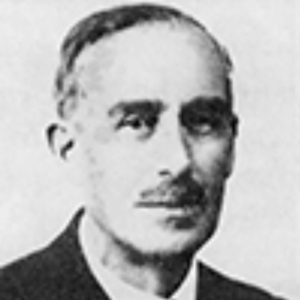
The interesting thing is that "Methode naturelle" has had a significant impact on the start and development of gymnastics in Denmark. It was under the inspiration of "Methode naturelle" that the philosopher Jean-Jacques Rousseau developed his philanthropic ideas, which were fundamental to the constitution of gymnastics in the school subject circle in Denmark.
It was also Hébert's training system that inspired the Danish gymnastics educator Niels Bukh to let his gymnasts perform shirtless and in small black boxer shorts.ix Parkour is thus based on some of the same ideas about the development and formation of the body through natural exercises as the traditional gymnastics developed in Denmark.
When parkour is put in relation to J. C. F Gutsmuth's historical gymnastics sites, parkour appears as traditional gymnastic movements that have simply been pulled out of the historical textbooks and set free in our time:
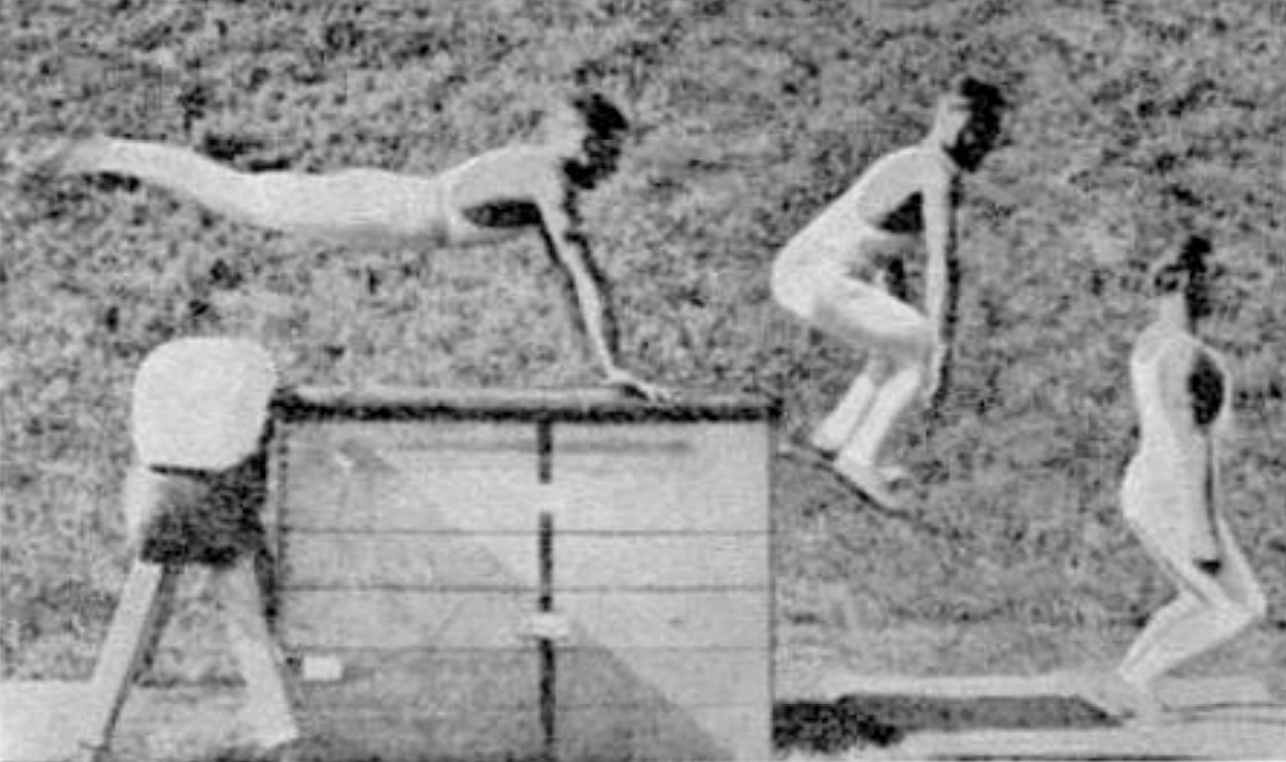
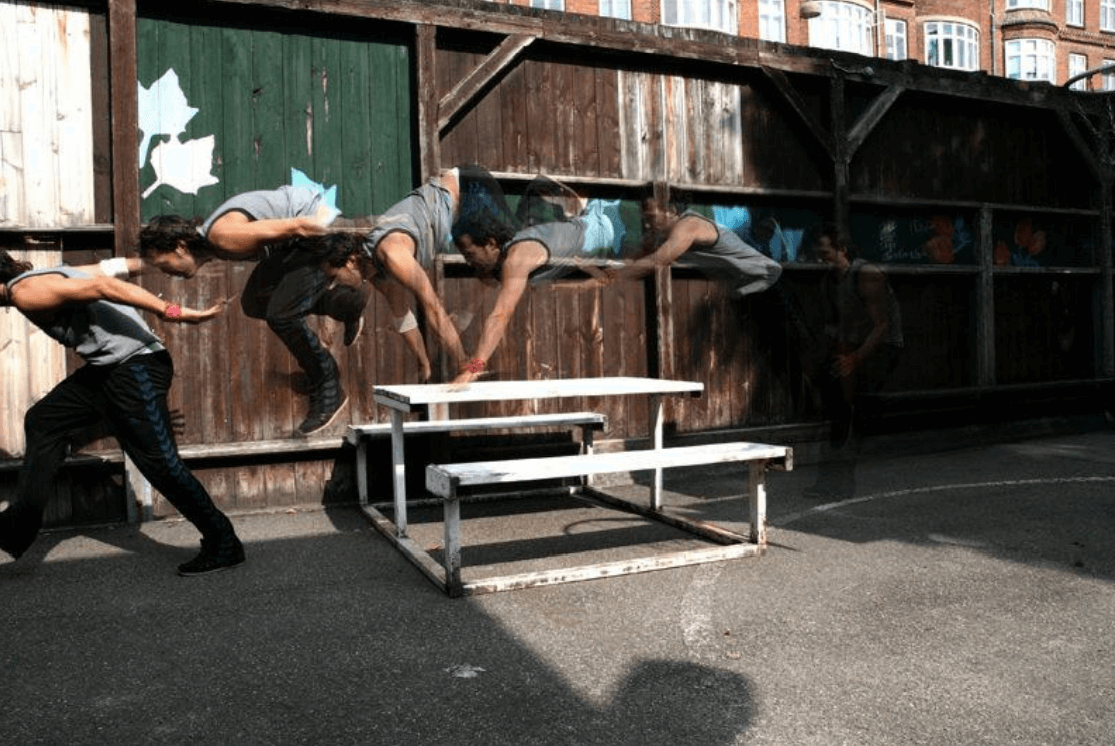
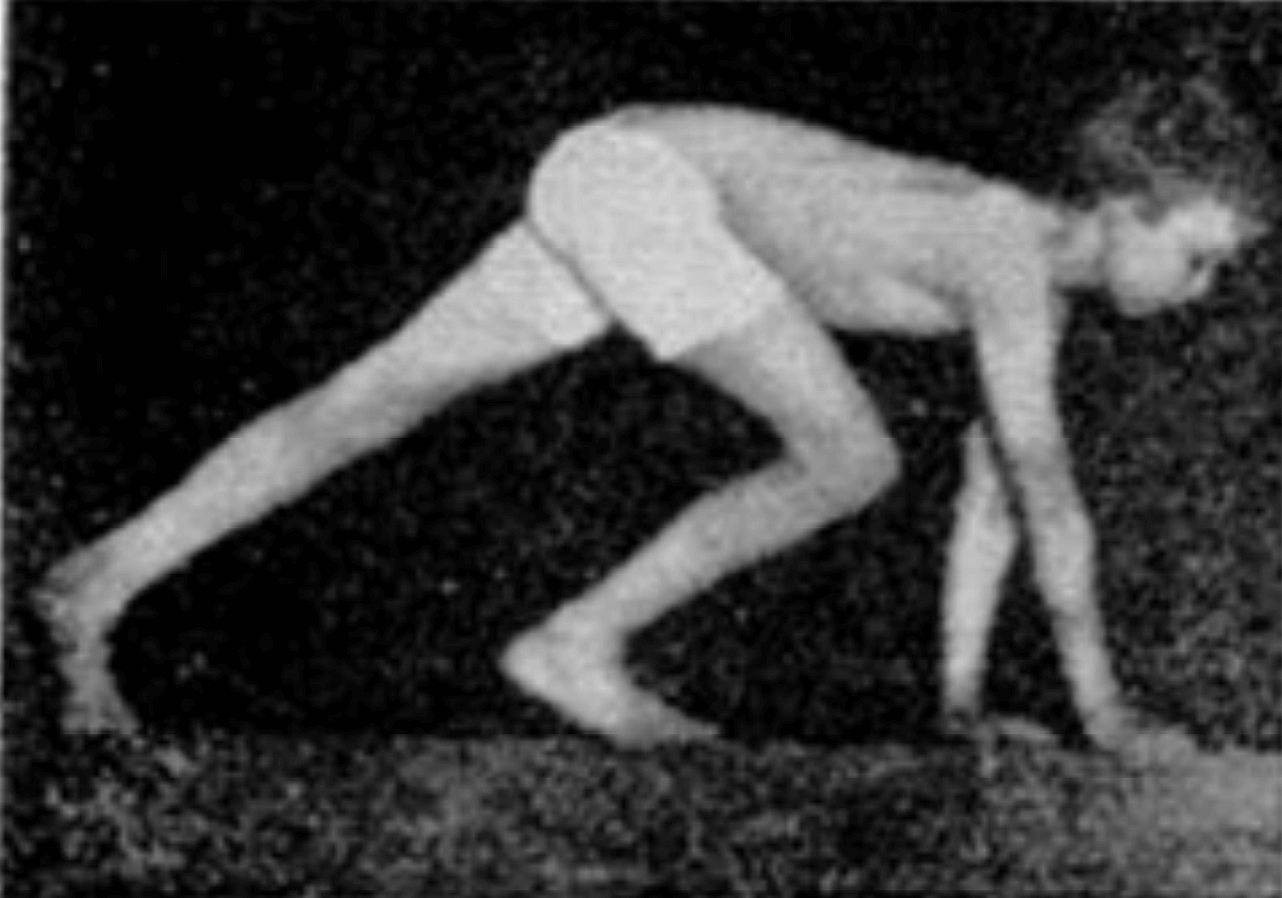
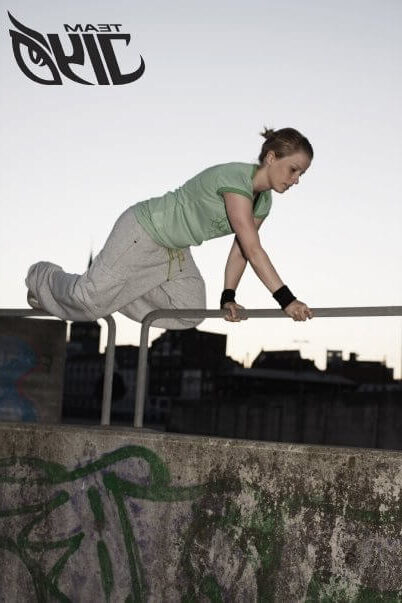
However, the two images contain a significant difference that attracts particular attention.
Whereas gymnastics, as illustrated in figure 3, used defined squares, parkour uses the city's random street environments. Instead of barriers, plinths and other classic gymnastic equipment, practitioners move on the street's available objects.
It is clear that the activity in its use of street space is about more than the development and formation of the body through natural exercises, but the question is: about what?
In the past, street corners have been perceived as a potentially sinful place with the risk of social disorder and bad company.xi With parkour, however, we see a revitalization of street corners as a place for physical activity. Despite the immediate historical and movement similarities, the two images in Figs. 3 and 4 show that these similarities remain only a set of commonalities that certainly contain significant meanings, but do not necessarily give us a greater understanding of what parkour is really about.
Is it an extreme sport?
The media often portrays parkour as an extreme sport.
The media has capitalized on the visual effects of speed, excitement and action-packed intensity that the parkour practitioners' rapid movement through the city creates. In the 2007 James Bond film 'Casino Royale', parkour is part of an opening escape scene where James Bond, jumping from crane to crane at dizzying heights, chases the villain.
Parkour contains an aesthetic element of excitement, speed and action, so it is no wonder that the media wants to use it.
When we look at the real-life practices of the activity, parkour also seems to contain the same orientation towards pushing boundaries that most extreme sports do.
The parkour practitioners' rapid movements around the street space create risks. These risks are linked to an understanding of parkour as a cultivation of boundary seeking and testing, which leads to self-development through physical and mental transgressions.
However, most practitioners reject the term parkour as an extreme sport and instead describe it as an art of movement and a lifestyle.
The question is whether it's about pushing boundaries and self-development at all, or whether this is just an immediate categorization brought about by the media's use of purely visual effects?
The experience of body control and continuous self-development
Parkour is about challenging yourself physically and mentally. The movements around the hard, often high-altitude objects of the street create the risks that you as a practitioner must constantly deal with.
It is precisely this process that is at the heart of parkour. Parkour is about exploring and assessing your movement limits and finding the right way to overcome them. In parkour, it is necessary to always thoroughly analyze the challenge by measuring the physical distances and relating them to your movement capacity.
Through this process, the ability to anticipate situations accurately is developed and, as a parkour practitioner, you gain experience with your respective limits and their nature.
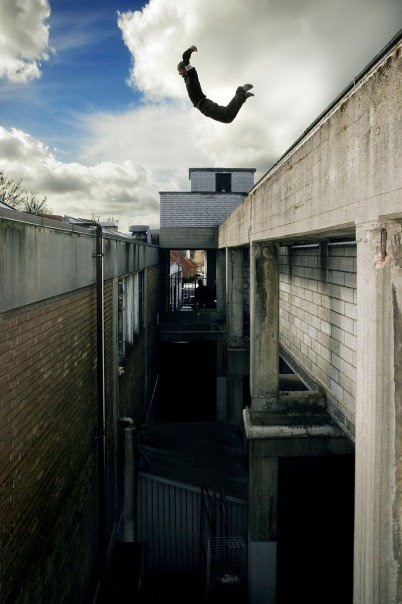
Therefore, the challenges must always be seen in the light of the athletes' movement abilities. The central aspect of the practitioners' experience with movement limits and their thematization of the nature of their movements is that the challenges are not something that parkour practitioners throw themselves blindly and unthinkingly into, but something that is continuously related to their movement abilities.
The question is, however, what are the meanings behind the challenges, in other words: why do we do it? For parkour practitioners, it's about continuous development and transcending and using your body to the fullest. The risks created by jumping several meters above the asphalt are meaningful to practitioners because they encourage physical development.
In contrast, "wasting" one's movement potential is irrational. It's about living one's physicality to the fullest, and to do this, one must constantly push the boundaries to ensure a continuous development of skill and control.
Overcoming movement challenges not only makes sense because it is rational, but also creates an immediate excitement and euphoria.
Overcoming a movement challenge feels like overcoming something intangible.
The overcoming contributes to a surprising new experience of one's ability to move. The excitement and euphoria of overcoming is not only meaningful in the moment, but also provides a sense of self-development.
In other words, there is more at stake than the subjective bodily feeling of excitement and euphoria that the overcoming creates in the moment. The parkour practitioner's creation and cultivation of excitement and adrenaline through movement challenges is a way of playing with - and exploring - the body's movement abilities and ensuring their continuous development.
Through parkour, the practitioner experiences their body as a boundary-breaking and learnable entity.
The flow experience
When parkour practitioners talk about their movements, it is often not the challenging movements that are the focus, but rather the ability to move efficiently and in flow through the environment.
In parkour, it's all about achieving expressive expression, which can be defined as 'flow.'
Flow appears as an unbroken and fluid rhythm of movement that is built through the body's adaptation to the location. Flow is an orientation towards expressive expression, but the question is whether this is the only thing at stake?
The American professor of psychology Mihaly Csikszentmihalyi, the founder of flow theory, describes flow as a state where there is a balance between the size of the challenge and the human ability to tackle it, resulting in physical and psychological pleasure for the individual.xiv According to Csikszentmihalyi, flow contains a physical and emotional dimension of experience.
In the flow movements, a balance between challenges and physical abilities is experienced. The experience of flow is felt as a physical, pleasurable sensation of a fluid and continuous rhythm of movement. It is the sensation of being able to continue over the wall, over the railing, onto the bench, one continuous movement.
Once this rhythm is experienced, there is no doubt about how flow is experienced. Mastering movements in flow helps the movements feel liberated, effortless and in accordance with an inner fluid rhythm. In a historical perspective, the gymnastics teacher Niels Bukh also worked with a bodily experience of rhythm in movement in his primitive gymnastics:
"The pupils can learn the form of an unknown piece of work by demonstration or by making all the individual movements on command or by counting. On the other hand, the effect of a work cannot be taught, but must be experienced, and in most cases this is not done by command or counting, but in free experiments where the individual determines the speed and rhythm."
As can be read in the quote, Bukh distinguishes between a work's "Form", which can be interpreted as the type of movement, and its "Effect", which can be interpreted as the meaning of the movement for the practitioners, i.e. the way in which the movement makes sense.
Bukh's description provides an appropriate understanding of the practitioners' experience of flow as a pleasurable bodily sensation in parkour. The bodily pleasure that the movement energy flow creates is the moment that gives the movements meaning. In the practice of parkour, we can talk about flow as a fundamental bodily experience of pleasure.
The movements make sense because they feel good. Flow is a bodily pleasure that parkour immerses you in and recreates over and over again through repetition of the movements. This complete immersion is described as one of the most common and characteristic features of achieving flow in activities.
Are parkour athletes narcissists?
With over 111,000 parkour videos on the media sharing site www.youtube.com, the use of samplers is a big part of parkour.
A sampler is an edited collection of small video clips of the practitioner performing different movements. The performer edits the small video clips together with one or more pieces of music into a rhythmic mosaic of movement situations.
With the use of edits and background music, the athletes portray a certain image, which at first glance can make parkour appear to be a narcissistic cultivation of self-expression.
Is parkour then about using the city as an arena to showcase your individual physicality and abilities? Our use of urban space is certainly different from the other people who use it.
It's about seeing challenges and alternative movement options where others see limitations and unambiguous functionality. However, it's not only about staging your bodily individuality, but also your distinctive style. This aspect ties in with street culture, where the worst thing you can be is mainstream.
However, understanding the practice of parkour as a self-centered practice of creating and exposing one's own individual style is met with a counterpart in the form of group formations.
Just like in street culture, parkour is practiced in groups, which indicates that there are also social aspects at stake.
The question is whether this is really only a social element, which is a necessary stage for individual self-expression and recognition, or whether it is a matter of close and binding communities?
To answer this question, it is necessary to explain an important distinction that can be drawn between the movements in parkour, the so-called vaults, and the standardized movements of vaulting gymnastics.
Gymnastics exercises contain anatomical, physiological and aesthetic standards for the correctness of the exercises.
The anatomical and physiological standards in gymnastics can be understood as the specific positions of the body parts that help classify the exercises, i.e. make a flik flak a flik flak.
The aesthetic standards relate to the correctness of the gymnast's execution of the anatomical and physiological standards. A vault in parkour is a named movement such as catbalance, monkey, dash or speedvault.
Unlike traditional mat and trampoline jumping, these vaults are not subject to the same radical anatomical and physiological standardization that applies to gymnastics.
What matters is not the specific placement of the athlete's body parts, but the way in which they glide through the environment in the same movement, creating flow.
Although the street space in parkour is static and stable, it does not provide the same conditions for all athletes. In order to achieve flow in movement, parkour practitioners must modulate their movements according to their personal physicality.
This modulation does not take place in the traditional mat and trampoline jumps of gymnastics. Instead, in order to create the same conditions for everyone, gymnasts are organized by level and age, which tries to equalize unequal movement conditions.
It is the body that has to adapt to the movements and not the other way around, as is the case in parkour, where diversity is cultivated. It's not about approximating correct movements, but about forming a personal movement style in accordance with your physicality.
The question now is what relation this ideal of movement has to the question of whether there are close and binding communities in parkour, or whether the social is merely a necessary stage for individual self-expression and recognition? The answer is that the cultivation of close relationships in parkour takes place precisely because the formation of personal movement style is not an individual but a collective project.
In parkour, athletes are not "led" as in gymnastics, and as an athlete, you have to explore and assess your surroundings and movement possibilities yourself, which is why the group plays a more significant role in the individual's development.
As athletes, you help each other to overcome and master the movement challenges. Each individual's personal movement challenges are a social project for the whole group.
Although in parkour we cultivate personal physicality and movement style, the movement ideal of personal style helps to create close relationships and a meaningful community through mutual engagement in each other's movements.
These close relationships are not only central to the formation of personal movement style, but also to a sense of identity and belonging to a community. How should we understand parkour? Parkour has a number of immediate similarities with extreme sports, gymnastics and other street activities, but the key point is that parkour must be understood as a unique activity that contributes in a completely new way to enjoyable and surprising experiences of the body's movement possibilities.
Parkour creates positive experiences of competence in overcoming challenges, creating one's own identity and belonging to a committed and meaningful community.
Understanding that parkour is an independent and meaningful activity that can provide countless amazing experiences for children, young people and adults alike is essential for the activity to develop.
Parkour has a unique appeal across multiple age groups, and there is no doubt that the activity will become even more widespread over the next few years. At Team Jiyo, we work to create the best possible conditions for this development through workshops and consultancy work.
Philosophy and methodology
At the core of parkour is the idea of efficiency - moving from point A to B in the fastest possible way by adapting to and overcoming physical obstacles. This can involve running, jumping, climbing, rolling, and a variety of other movements.
However, it's important to note that parkour isn't just about physical capacity; it's also about mental agility. Practitioners of parkour, known as traceurs (for men) and traceuses (for women), learn to see their surroundings in new ways and develop problem-solving and quick thinking alongside physical prowess.
Training and techniques
Parkour training typically involves conditioning, strength training and technique training to prepare the body for the demanding physical challenges of the sport. Basic movements like climbing, jumps and rolls are fundamental, but more advanced techniques like precision jumps, kong vault (a type of hands-first jump) and wall runs can also be part of a traceur's repertoire.
Parkour today
Since its inception, parkour has spread globally and become a recognized and respected discipline. It's also made its way into pop culture, with prominent appearances in movies, TV shows, and video games.
Many cities now have parkour parks and facilities, and it has also been included in many schools' physical education programs. However, despite its increasing mainstream popularity, parkour is still very true to its core philosophy of freedom, creativity and self-discipline.
In short, parkour is a unique and inspiring discipline that challenges both body and mind. It's a way of engaging with the world that promotes both physical fitness and mental agility, while creating a deep understanding of our own limitations and potential.
What is Freerunning?
Freerunning is a fascinating and incredibly dynamic discipline that originates from parkour, but takes a unique twist by including creative and aesthetic elements in the movement form. While parkour is often about finding the most direct and efficient route through an environment, freerunning is about exploring the creativity and artistic freedom of movement.
Origin and philosophy
Freerunning was originally developed by Sébastien Foucan, one of the original members of the French parkour group "Yamakasi". Unlike parkour, where the main goal is efficiency and speed, freerunning encourages practitioners to explore and interact with their environment in more artistic and individual ways. In other words, it's less of a sport and more of an art form expressed through body movement.
Techniques and training
Freerunning includes a wide range of acrobatic movements, including flips, spins, and tricks that are often not found in traditional parkour. In addition, freerunning places a strong emphasis on fluidity of movement and aesthetics, where how a movement looks is just as important as how it is executed.
Freerunning training often involves developing strength, agility, balance and coordination while learning and perfecting various acrobatic techniques. Freerunners typically train in both urban and natural environments, from city parks and buildings to forests and rock formations.
Cultural significance
Freerunning has grown in popularity since it was first introduced to the public in the early part of the 21st century. Not only has it become a recognized discipline in its own right, but it has also had a significant impact on pop culture, often being featured in movies, music videos and video games.
Despite its growing popularity, freerunning is still deeply rooted in its original philosophy of freedom, self-expression and creative exploration. For many practitioners, freerunning is more than just a sport or hobby; it's a lifestyle and a way of seeing the world.
In short, freerunning is a unique and creative discipline that is all about exploring the world around us through movement. It's an art form that gives practitioners the freedom to express themselves in their own unique way, challenging them to constantly push their own boundaries and try new things.
Parkour and Freerunning in Denmark
In Denmark, several brands and parkour teams have helped to influence the movement in a positive direction. Team JIYO was the very first in Denmark and has played an important role in how Danes view parkour and freerunning in Denmark today.
It's about finding joy, freedom and liberation in movement.
Testimonials









